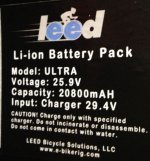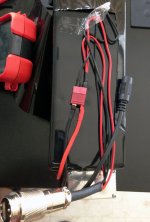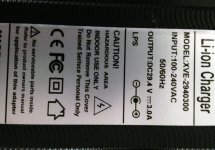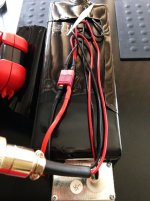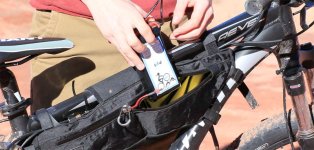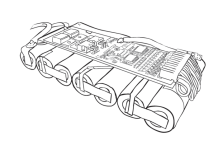Hello. I would like to answer the questions regarding the BMS that Leed uses. For the sake of full disclosure, I work for Leed providing engineering support and occasionally work to troubleshoot any issues regarding product failures, which do happen from time to time considering the technology and hardware involved. To clarify quickly here, though it is difficult to quickly explain the tech, all Leed's 250 Series use a BMS in variable VDET operations. This prevents overcharge and disallows a singular cell to supercharge and fully unload. So, allow me to explain the VDET operations that we have built into the BMS for the 250 Series battery systems. Forgive the overkill, but it may be necessary considering the misinformation and disinformation on this thread. I can understand how it gets to that level, but allow me to explain the VDET operations on Leed's BMS quickly regarding overcharging prevention. VDET1n operation or over-charge detectors (n=1, 2, 3, 4, 5) while the cell is charged, the voltage between VC1 pin and VC2 pin (voltage of the Cell-1), the voltage between VC2 pin and VC3 pin (voltage of the Cell-2), the voltage between VC3 pin and VC4 pin (voltage of the Cell-3), the voltage of VC4 pin and VC5 pin (voltage of Cell-4), and the voltage between VC5 pin and VSS pin (voltage of the Cell-5) and so forth for additional cells are supervised. If at least one of the cells’ voltage becomes equal or more than the over-charge detector threshold, the over-charge is detected, and an external charge control Nch MOSFET turns off with COUT pin being at "L" level via an external pull-down resister and charge stops. To reset the over-charge and make the COUT pin level to "H" again after detecting over-charge, in such conditions that a time when all the cells’ voltages are down to a level lower than over-charge released voltage. The output voltage of COUT pin becomes "H", and it makes an external Nch MOSFET turns on, and charge cycle is available. The over-charge detectors have hysteresis. Internal fixed output delay times for over-charge detection and release from over-charge exist. Even if one of voltage of Cells keeps its level more than the over-charge detector threshold, and output delay time passes, over-charge voltage is detected. Even when the voltage of each cell becomes equal or higher level than VDET1 if these voltages would be back to a level lower than the over-charge detector threshold within a time period of the output delay time, the over-charge is not detected. Besides, after detecting over-charge, each cell voltage is lower than the over-charge detector released voltage, even if just one of cells' voltage becomes equal or more than the over-charge released voltage within the released output delay time, over-charge is not released. The output type of the COUT pin is Pch open drain and "H" level of COUT pin is VDD pin voltage. In VDET2n or over-discharge detectors (n=1, 2, 3, 4, 5) While the cells are discharged, the voltage between VC1 pin and VC2 pin (the voltage of Cell-1), the voltage between VC2 pin and VC3 pin (Cell-2 voltage), the voltage between VC3 pin and VC4 pin (Cell-3 voltage), the voltage between VC4 pin and VC5 pin (Cell-4 voltage), and the voltage between VC5 pin and Vss pin (Cell-5 voltage) are supervised. If at least one of the cells’ voltage becomes equal or less than the over-discharge detector threshold, the over-discharge is detected and discharge stops by the external discharge control Nch MOSFET turning off with the DOUT pin being at "L".The condition to release over-discharge voltage detector is that after detecting over-discharge voltage, all the cells' voltage becomes higher than the over-discharge released voltage, DOUT pin becomes “H” level, and by turning on the external Nch MOSFET, discharge becomes possible. The over-discharge detectors have hysteresis. The output delay time for over-discharge detect is set with an external capacitor C1 connected to CT1 pin. If at least one of the voltage of Cells is down to equal or lower than the over-discharge detector threshold, if the voltage of each Cell would be back to a level higher than the over-discharge detector threshold within a time period of the output delay time, the over-discharge is not detected. Output delay time for release from over-discharge is also set internally. After detecting over-discharge, supply current would be reduced and be into standby by halting unnecessary circuits and consumption current of the IC itself is made as small as possible. When a cell voltage equals to zero, if the voltage of each cell is lower than charge inhibit maximum voltage, charge is not acceptable. All the cell voltages are higher than charge inhibit maximum voltage, COUT pin becomes "H" and a system is allowable to charge. The output type of DOUT pin is CMOS having "H" level around 12V of the internal regulator and "L" level of VSS. In VDET3-n or (n=1, 2) excess discharge-current detector or short circuit protector when the charge and discharge is acceptable, SENS pin voltage is supervised, if the load is short and SENS pin voltage becomes equal or more than excess discharge current threshold, and equal or less than short detector threshold, the status becomes excess discharge current detected condition. If SENS pin voltage becomes equal or more than short circuit detector threshold, the status becomes short circuit detected, then DOUT pin outputs "L" and by turning off the external MOSFET, large current flow is prevented. The excess discharge current detector has two thresholds, and each threshold has the output delay time. In terms of the output delay times, the delay time for the excess discharge current detector 2 is set shorter than the excess discharge current 1. The output delay times for the excess discharge-current detectors are set by an external capacitor C2 connected to CT2 pin. A quick recovery of SENS pin level from a value between the excess discharge current detector and short circuit detector threshold within the delay time, may keep the status as before excess discharge current detected. Output delay time for the release from excess discharge-current detection is also set internally. When the short circuit protector is enabled, the delay time is also set. Between the drain of the external FET connected to DRAIN pin, and the drain of an external FET connected to COUT and DOUT, an external resistor should be mounted to release from over-discharge. After an excess discharge-current or short circuit protection is detected, an external FET connected to DRAIN pin turns on and the resistance of release from excess-discharge current, is connected to VSS. After detecting the excess discharge current or short circuit, load is removed and opened, VMP pin level is connected to the VSS pin level, through the pulled down resistor for release from excess discharge, and when the VMP pin becomes equal or less than VDET31×0.75V, the circuit is released from excess discharge or short automatically. When the excess-discharge current is released, the external FET connected to DRAIN pin turns off and resisters for release from excess-discharge current status is separated from Vss. In VDET4 or excess charge-current detector when the battery pack is chargeable and discharge is also possible, VDET4 senses SENS pin voltage. For example, in case that a battery pack is charged by an inappropriate charger, an excess current flows, then the voltage of SENS pin becomes equal or less than the excess charge-current detector threshold, then the output of COUT which an external pull-down resister is connected to becomes "L", and prevents from flowing excess current in the circuit by turning off the external Nch MOSFET. Output delay of excess charge current is internally fixed. Even the voltage level of SENS pin becomes equal or lower than the excess charge-current detector threshold, if the voltage becomes higher than the excess charge current threshold within the delay time, the excess charge current is not detected. Output delay for the release from excess charge current is also set. VDET4 can be released with disconnecting a charger and connecting a load. Though VDET operations are not required, they are important when prolonging a battery system and preventing any damage from continued use. A witting battery operator will not need a BMS in every case, but there are few out there who understand the tech entirely and this is a reason bad information gets propagated quite easily.



